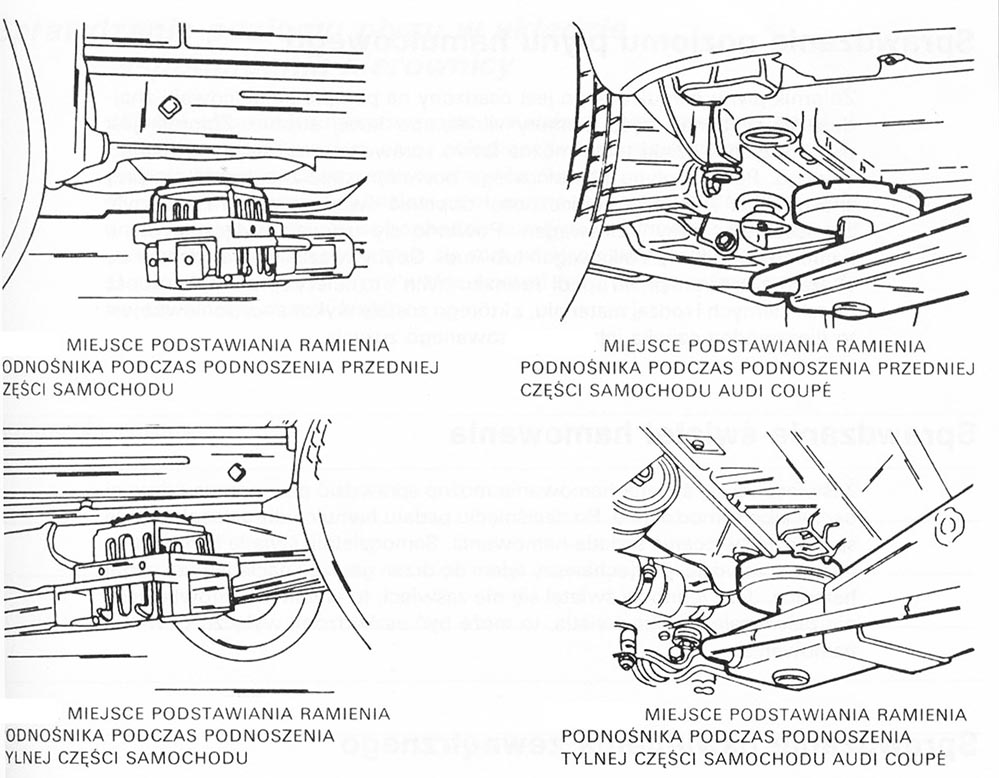 Most of the maintenance work can be done independently. However, it is often better to carry out some activities at a service station. These include activities, for which special tools are necessary, experience or measuring instruments, and activities, which the service station can do faster.
Most of the maintenance work can be done independently. However, it is often better to carry out some activities at a service station. These include activities, for which special tools are necessary, experience or measuring instruments, and activities, which the service station can do faster.
Listed below, however, you should regularly do simple tasks yourself. They are extremely important to keeping your vehicle in good condition.
Checking the engine oil level.
The oil level should be checked at least once a week. To do this, pull out the dipstick and wipe it with a clean cloth. Then reinsert the indicator and pull it out again. If the vehicle is level, the oil level should be between the lower and upper markings of the dipstick. If the oil is below the lower mark, you need to add it. Never overfill with oil, that is, its level must not exceed the upper mark. You absolutely have to be sure, or oil, to be used conforms to VW standard 50 000. You also have to remember, that gasoline engines use oils other than diesel engine oils.
Checking the brake fluid level
The brake fluid reservoir sits on the master cylinder and is located at the rear of the engine compartment, on the left side. The reservoir is transparent, making it easy to check the brake fluid level. The brake fluid level should always be at the mark ,,Max”. If necessary, top up with fresh fluid in accordance with Volkswagen recommendations. Only Volkswagen or Audi brake fluid should be used. If it turned out at the time of checking, that the fluid level has dropped to the "Min" mark, check the thickness of the friction plates and the type of material, from which they were made, because it is a reliable sign of their advanced wear and tear.
Checking the brake lights
The illumination of the brake lights can be checked with the help of a second person or by yourself. After depressing the brake pedal, a second person can check the brake light lighting. You can check the brake lights by yourself, backing up to the garage door and depressing the brake pedal. If one of the lights doesn't come on, then replace the bulb; if both lights do not come on, it may be a faulty brake light switch.
Checking outdoor lighting
Turn on all lights one by one (also flashing headlights and hazard warning lights) and check their operation. The rear lights and reversing lights are most conveniently checked in the dark under the garage door, without leaving the vehicle, because then the glare of the lights can be seen in the rearview mirror.
Checking tire pressure
It's best to check the tire pressure at a gas station. Depending on the type of tires installed, the pressures required for the same car may differ significantly. If the vehicle is fully loaded, the pressure in the rear tires must be increased by approx 0,2 only. Before driving on the motorway for a long time, at high speeds should also be increased by approx 0,2 bara tire pressure.
Checking the coolant level
With the engine cold, the coolant level in the expansion tank should be between the "min” i ,,max”. If necessary, wait, until the engine has cooled down and add coolant. If the engine is hot, it should wait a bit and then unscrew the cap of the expansion tank. This should be done very slowly, to avoid scalding by steam.